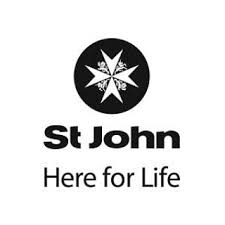First Aid
DRSABCD
First aid is as easy as ABC - airway, breathing and CPR (cardiopulmonary resuscitation). In any situation, apply the DRSABCD Action Plan.
DANGER
Always check the danger to you and any bystanders before the injured or ill person. Make sure you do not put yourself in danger when helping another person.
RESPONSE
Is the person conscious? Do they respond when you talk to them, touch their hands or squeeze their shoulder?
SEND FOR HELP
Call 111. Don’t forget to answer the questions asked by the operator.
AIRWAY
Is the person’s airway clear? Is the person breathing?If the person is responding, they are conscious and their airway is clear, assess how you can help them with any injury. If the person is not responding and they are unconscious, you need to check their airway by opening their mouth and having a look inside. If their mouth is clear, tilt their head gently back (by lifting their chin) and check for breathing. If the mouth is not clear, place the person on their side, open their mouth and clear the contents, then tilt the head back and check for breathing.
BREATHING
Check for breathing by looking for chest movements (up and down). Listen by putting your ear near to their mouth and nose. Feel for breathing by putting your hand on the lower part of their chest. If the person is unconscious but breathing, turn them onto their side, carefully ensuring that you keep their head, neck and spine in alignment. Monitor their breathing until you hand over to the ambulance officers.
CPR (CARDIOPULMONARY RESUSCITATION)
If an adult is unconscious and not breathing, make sure they are flat on their back and then place the heel of one hand in the centre of their chest and your other hand on top. Press down firmly and smoothly (compressing to one third of their chest depth) 30 times. Give two breaths. To get the breath in, tilt their head back gently by lifting their chin. Pinch their nostrils closed, place your open mouth firmly over their open mouth and blow firmly into their mouth. Keep going with the 30 compressions and two breaths at the speed of approximately five repeats in two minutes until you hand over to the ambulance officers or another trained person, or until the person you are resuscitating responds. The method for CPR for children under eight and babies is very similar and you can learn these skills in a CPR course.
DEFIBRILLATOR
For unconscious adults who are not breathing, apply an automated external defibrillator (AED) if one is available. They are available in many public places, clubs and organisations. An AED is a machine that delivers an electrical shock to cancel any irregular heart beat (arrhythmia), in an effort get the normal heart beating to re-establish itself. The devices are very simple to operate. Just follow the instructions and pictures on the machine, and on the package of the pads, as well as the voice prompts. If the person responds to defibrillation, turn them onto their side and tilt their head to maintain their airway. Some AEDs may not be suitable for children.
IN AN EMERGENCY DIAL 111


BASEBALL NEW ZEALAND
P.O. Box 301 257
Albany
Auckland
New Zealand
Regional Associations
Wellington Baseball
International Member Organisations
MLB
 Admin Login
Admin Login